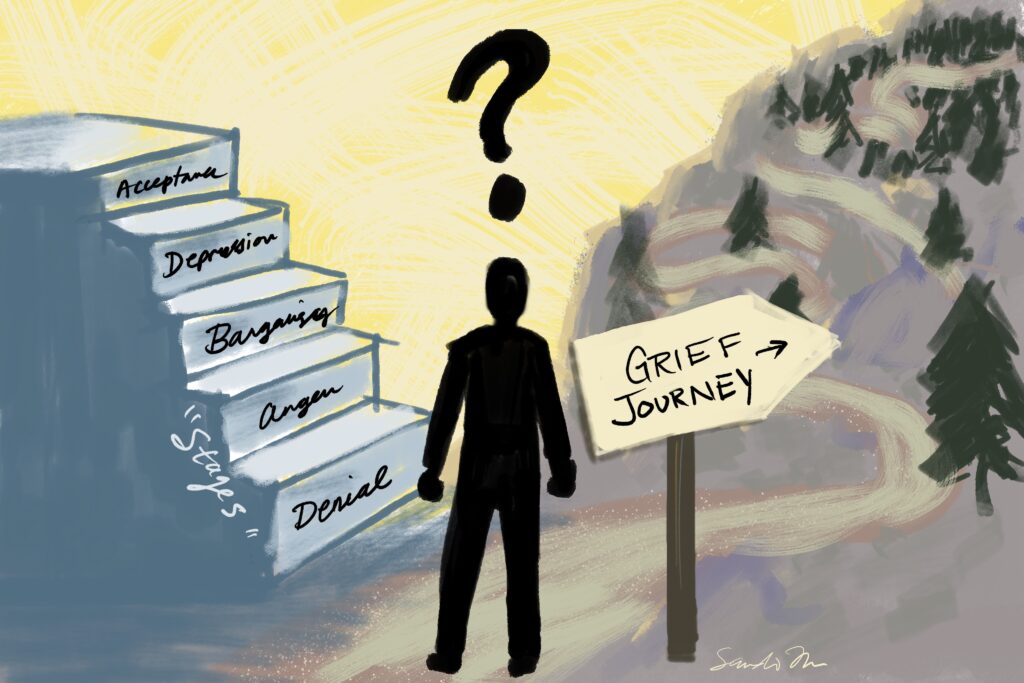By: Susan Peterson
Grief asks you to feel everything, and mindfulness helps you stay just long enough to know you won’t drown in it. You don’t have to be okay. You just have to show up. And breath by breath, moment by moment, that’s what healing starts to look like.
There’s a particular kind of silence that follows loss. It doesn’t always come right away—sometimes it creeps in after the casseroles have cooled and the sympathy cards are neatly stacked on the kitchen counter. It’s the hush between sobs, the vacuum after the noise of a full house fades, and you’re left alone with absence. In that kind of silence, the mind gets loud. And for many, the idea of mindfulness feels both laughably out of reach and desperately needed. But what if mindfulness isn’t a fix for grief, but a companion?
Learning to Sit with the Ache
Grief isn’t something you solve, and mindfulness doesn’t ask you to. One of the first things you learn when you practice mindfulness is how to sit with discomfort without rushing to escape it. That’s a hard ask when your chest feels like it’s caving in, but grief demands presence. When you lean into mindfulness, you begin to see that there’s a kind of quiet courage in just being with the pain, without trying to rearrange it or rename it. You learn that surviving the moment is enough—no gold stars, no spiritual enlightenment, just breath.
Small Routines as Lifelines
In the chaos that often follows loss, your days can start to feel like they’ve lost their skeleton. Time stretches and bends in unfamiliar ways. Creating small rituals—a morning tea, a walk at the same hour, a five-minute breathing practice—can become quiet anchors. These routines don’t erase pain, but they create a scaffolding around it, giving your mind and body a predictable space to land. You begin to remember that there is still rhythm, even in the aftermath of rupture.
Staying Open to the Light
It’s easy to lose perspective when grief paints everything in shadow, but mindfulness can gently tilt your focus toward what still glows. Even in sorrow, there are flickers of light—a kind word, a moment of quiet, the feeling of sun on your skin—and mindfulness helps you notice them without demanding that you feel better. By embracing the present moment without judgment, you create space for a more positive and balanced mindset. That doesn’t mean ignoring the pain; it means allowing your heart to hold both the ache and the beauty, without needing to choose between them.
The Body Remembers What the Mind Denies
Grief has a physicality to it, and mindfulness practices that center the body—like yoga, body scans, or even gentle stretching—can help you tune into that truth. Sometimes the mind is too raw, too splintered to carry the full weight of loss. The body, though, doesn’t lie; it knows where the sorrow lives. Mindfulness invites you to notice how grief sits in your shoulders or your jaw, and offers you the gentlest of nudges to meet yourself there. That somatic awareness is not about control but recognition.
Letting Go of the “Right” Way to Grieve
There’s a quiet tyranny in the cultural scripts around grief—what it should look like, how long it should last, who gets to be broken and for how long. Mindfulness challenges that by encouraging non-judgmental awareness. When you’re not labeling your experience as “too much” or “not enough,” you start to see grief for what it is: chaotic, inconsistent, deeply personal. And with that shift, you create space for your own story to unfold without the pressure to perform resilience. You remember that healing isn’t linear, and that’s okay.

Finding Solace in Sensory Grounding
When the emotional waves get too high, the senses can become your lifeline. Grounding techniques rooted in mindfulness—like noticing five things you can see, four you can touch, three you can hear—pull you out of the mental spiral and into the now. It doesn’t erase the ache, but it breaks its hold on your nervous system. In those moments, even the texture of a blanket or the smell of coffee can feel like reminders that the world still exists, and you’re still part of it. Sometimes, that’s the closest thing to relief.
Community Without Words
Mindfulness doesn’t always happen in solitude. Grief groups that incorporate mindful listening or even quiet companionship can be unexpectedly healing. In those rooms, you don’t need to explain yourself or manage someone else’s discomfort. Sometimes just breathing next to another person who gets it is enough. It’s in that shared silence that you realize you’re not as alone as you feel, and that presence—raw, unscripted, and real—is a form of connection too often overlooked in the frenzy of comfort-giving.
You don’t meditate your way out of grief. You don’t breathe it away or transcend it through sheer awareness. But mindfulness offers you something subtler—a place to be honest, to unravel without fear, to sit in the thick of sorrow and still sense that there is something unbroken inside you. Grief asks you to feel everything, and mindfulness helps you stay just long enough to know you won’t drown in it. You don’t have to be okay. You just have to show up. And breath by breath, moment by moment, that’s what healing starts to look like.
Explore the profound journey of life and death with Everyone Dies, where expert insights and heartfelt stories guide you through understanding, coping, and living fully until the very end.








